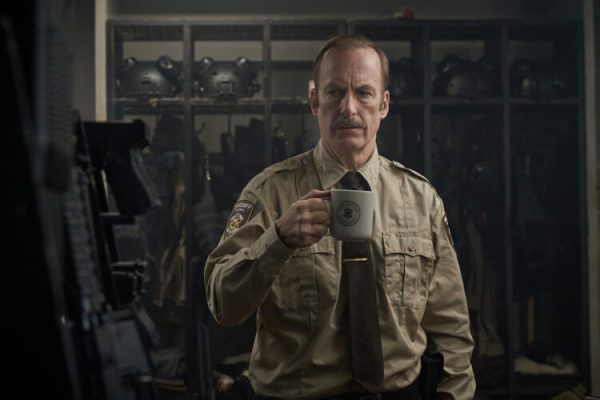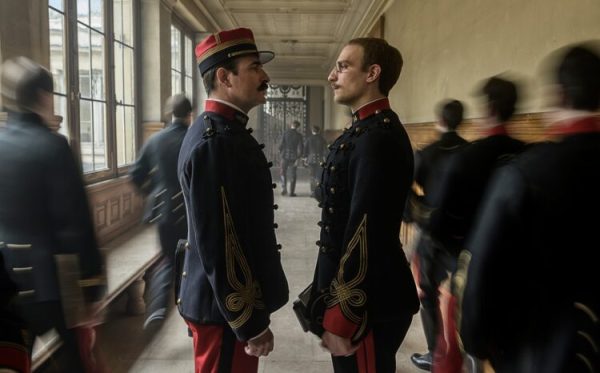
A risky filmmaking project with Francis Ford Coppola––what could go wrong? Or more accurately: imagine what might go legendarily right. Not all of his films have had troubled, turbulent productions, but the essential chaos of creativity he tries to harness––and the necessary friction that results with his collaborators––is how he ultimately thrives. Subtract all of these factors, and the result probably turns out like Jack.
You can clearly isolate the creative process of devising and writing Megalopolis from the arduous task of making it, but the agony of the latter is the baptism by fire many of his greatest films progressed through to (potentially) clamber out the other side a masterpiece. Qualitative assessments in modern Internet film culture are always flexible, and an articulate argument (even proffered on X or Letterboxd) can have decisive impact on a film’s critical reputation. There’s enough interpretative leeway to call Megalopolis another masterpiece of untrammelled personal expression from Coppola, whilst simultaneously (or instead) seeing it as a pretentious, underwhelming failure.
With greater parallels to Apocalypse Now in its self-funded genesis than in his studio-backed career highlights (extending up to Bram Stoker’s Dracula in the early ‘90s), clearly a documentary enshrining the events on the ground had to be made. Up steps Mike Figgis, no stranger to iconoclastic, independent-working, and Hollywood-revenge narratives. Watching MEGADOC, the 107-minute result premiering this week at the Venice Film Festival, we wonder what Figgis wasn’t legally permitted to show, yet his project is key to understanding what Megalopolis is and what hamstrung it, and maybe, also, that greatness wasn’t its destiny.
Sticking largely to long, juicy vignettes––first observing rehearsals, then takes of scenes being filmed (and filmed again… and again), plus a few telling to-camera interviews with creative principals above and below-the-line––MEGADOC elaborates on what we’ve learned from the clearly partial and biased trade reporting that documented its production. Yet it also isn’t a corrective to that run of media revelations; just by visualizing the mayhem that made Megalopolis can we see that those articles (in the Hollywood Reporter especially) didn’t arise from nowhere.
What’s also telling is the lack of discussion on the final film’s vaunted themes––its optimism, futurism, and oft-unconvincing social critique. A partial revelation is Coppola noting how often the script was turned down in its decades of genesis (although not by the A-list actors attached at earlier incarnations); studio partnerships or assistance may have been plausible to help him over the line, as opposed to being solely an American Zoetrope production. Figgis’s strongest footage shows him struggling to translate those ideas, undercooked as they are, into visual and dramaturgic schema, whether chasing the right tone and cogently blocking the actors to the camera, or achieving the critical balance between post-production VFX and in-camera production design. Shia LaBeouf (playing the politically ambitious Clodio) has the most screen time in the former sequences, and alongside the friendliness of Dustin Hoffman to Figgis’s documentary access, the film inadvertently becomes a platform for these scandal-ridden men to have some positive, redemptive PR. Although the resignation of production designer Beth Mickle––hired, almost in a show of diplomacy to Hollywood as it stands now, for her work on James Gunn’s superhero films––is highlighted as a symbolic moment for the whole farrago by Figgis, it’s also tempting to think Megalopolis would have eventually landed in its current aesthetic state (beauty, scope, ugliness) whatever its difficult birth.
Those in the filmmaking community watching MEGADOC will likely feel seen and validated for their own divergent approaches, observing Coppola’s unique leadership style. A noteworthy contrast is the recently restored Hearts of Darkness: A Filmmaker’s Apocalypse, and how often there Coppola is on his feet, mobile and alert. While it’s obviously less feasible for a man in his mid-80s, the director constantly sitting in his close-to-camera fold-out chair, appearing like a fading, depressed king, augurs a certain atmosphere. Yet something as unwieldy and ultimately enduring as Megalopolis (with a less-compromised, “weirder” cut apparently being prepared) could only spring from him and his defiant creative philosophy. He may be seated, yet he’s not lying down, and he’s awake as he’ll ever be.
MEGADOC premiered at the Venice Film Festival and will be released on September 19.
The post Venice Review: MEGADOC Takes Us Behind the Scenes of Francis Ford Coppola’s Legendary Big Swing first appeared on The Film Stage.










